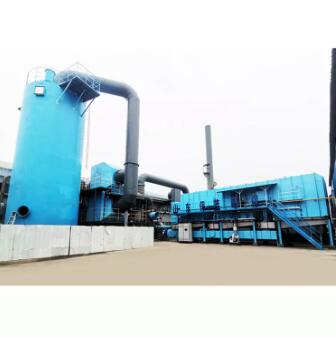Unlocking Environmental Benefits with Thermal Oxidizer Devices: RTO VOC Treatment Equipment
2023-10-17
Introduction
In today's rapidly industrializing world, environmental concerns have come to the forefront of discussions. As industries grow and produce essential products, they also generate various pollutants, including volatile organic compounds (VOCs). To address this challenge, industries turn to advanced pollution control technologies like Thermal Oxidizer Devices, specifically Regenerative Thermal Oxidizers (RTOs), to efficiently treat VOC emissions. In this blog, we'll delve into the world of RTO VOC treatment equipment, exploring their operation, benefits, and their pivotal role in reducing environmental impact.
What are VOCs?
Before diving into the specifics of RTOs, let's understand what VOCs are. Volatile Organic Compounds are organic chemicals that can easily vaporize into the atmosphere. They are prevalent in various industrial processes, including painting, printing, and chemical manufacturing. VOCs can have adverse effects on air quality and can contribute to the formation of ground-level ozone, a key component of smog. Consequently, controlling VOC emissions is crucial to safeguarding both human health and the environment.
Enter the RTO: A VOC Treatment Champion
Regenerative Thermal Oxidizers (RTOs) are highly efficient VOC treatment devices used in a wide range of industries. These devices are designed to destroy VOCs by subjecting them to high temperatures in a controlled environment. Let's take a closer look at how they work:
1. Adsorption and Preheating: The process begins by drawing VOC-laden air into the RTO through an inlet. A ceramic bed inside the RTO adsorbs and captures the VOCs. Simultaneously, the hot, purified air from the previous cycle, which was stored in another ceramic bed, is released. This preheated air helps save energy during combustion.
2. Combustion: The VOCs adsorbed in the first ceramic bed are directed to the combustion chamber. Here, they are exposed to high temperatures, typically around 1,500 to 1,800 degrees Fahrenheit (815 to 982 degrees Celsius). This extreme heat breaks down the VOCs into harmless gases like water vapor and carbon dioxide.
3. Heat Recovery: RTOs are known for their energy efficiency. As the hot, purified air exits the combustion chamber, it passes through the second ceramic bed, where it transfers its heat to the bed. This energy recovery process significantly reduces the overall energy consumption of the system.
4. Emission Control: The cleaned and cooled air is then released into the atmosphere, free from harmful VOCs.
Benefits of RTO VOC Treatment Equipment
1. High Efficiency: RTOs boast high destruction efficiencies, typically exceeding 95%. This means that almost all of the VOCs are effectively eliminated, reducing environmental impact.
2. Energy Savings: The heat recovery feature of RTOs helps industries reduce their energy consumption, leading to cost savings and a smaller carbon footprint.
3. Reliability: RTOs are known for their robust and reliable operation, requiring minimal maintenance.
4. Compliance: Using RTOs ensures compliance with environmental regulations, safeguarding your business from potential fines and penalties.
5. Reduced Odors: RTOs not only eliminate VOCs but also help control odors generated by industrial processes.
6. Versatility: RTOs can be customized to suit various applications and handle a wide range of VOC concentrations.
Conclusion
As the world strives to reduce its environmental impact, RTO VOC treatment equipment emerges as a valuable ally. These devices not only address the critical issue of VOC emissions but also offer energy savings and operational reliability. Investing in RTOs not only demonstrates a commitment to environmental responsibility but also makes good business sense. In a world where sustainability is paramount, RTOs are leading the way in creating a cleaner, greener future for industries around the globe.



